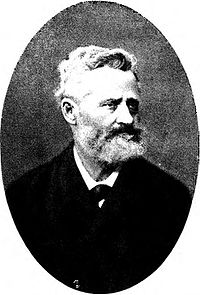Evolution of the name of the village: 1773 Csertész, Czertissne, 1786 Cschertesz, Čertissnye, 1808 Csertéz, Csertész, Cžertižné, Csertaz, 1863 Csertéz, 1873–1902 Csertész, 1907–1913 Nagycsertész, 1920 Čertiažne, 1927– Čertižné
Nestled on the Polish frontier, the name Certizne comes from the Slavic root that means border or edge. The village is first mentioned in 1431 as Cherthws. Is accompanied in 1773 as Czertissne of Čertissneye than in 1786, from 1920 as Čertiažne, since 1927 as Čertižné. Humenne village belonged to the estate,
In 1431 the community was known as Cherthws (not a typo), in 1773 as Czertissne, in 1786 Certissneye, in 1920 Certiazne, in 1927 Certizné. In Hungarian it was known as Csertész or Nagycsertész. Until 1969, administratively it belonged to zupa Zemplínska, okres Medzilaborce, kraj Presov. After 1960 it belonged to okres Humenné, kraj Východoslovenský. Since 1863 it was part of the Dobrianský estate.
In 1869 it had 826 residents, 976 in 1880, 1062 in 1890, 961 in 1900, 1034 in 1920, 924 in 1921, 1088 in 1930, 1092 in 1940, 824 in 1948, 839 in 1961, and 768 in 1970. In 1977 it covered 2,373 hectares.
The community was first mentioned in 1431, when it belonged to the gentry of Humenné. The settlement was founded by a soltys (agent) with resident villagers around 1560 on the territory of the Humenne estate. The oldest written report of Certizne comes from 1579. Its landlords were the aristocratic Drugeth family. In 1600 there were 15 houses of subjects and one or two houses of soltyses. Soon a wooden Orthodox church was built.It belonged to the Csáky family at the end of the 17th century, and to the Szirmay family at the end of the 18th century. From about 1863, the Dobriansky family owned property here. In 1715 the community had a millll and 22 households, but had dropped to 20 in 1720. In 1787 it had 118 homes and 815 residents, in 1828 it had 103 homes and 775 residents. In 1770-1848, the community had a "tridsiatkový úrad" [??]. The residents worked in the extensive forests and made charcoal. Many moved away in 1890-1900. The community was destroyed in 1914-15 during a Russian offensive. During the First Republic, the residents worked their own land and seasonally worked in the forests. In March 1935, the lo cal farmers chased out the executioners [exekútorov] and demonstrated against executions. In response, 230 cetniks jailed dozens of residents, 62 of which (including 2 women) were sentenced. The collective farm established in 1953 fell apart and was reestablished in 1959. As of 1977, some of the residents worked in factories in Medzilaborce, Humenné, and Kosice.
cal farmers chased out the executioners [exekútorov] and demonstrated against executions. In response, 230 cetniks jailed dozens of residents, 62 of which (including 2 women) were sentenced. The collective farm established in 1953 fell apart and was reestablished in 1959. As of 1977, some of the residents worked in factories in Medzilaborce, Humenné, and Kosice.
The kurie? farm building goes back to the beginning of the 19th century. The community has a church building, the Dobriansky Convent, built at the beginning of the 19th century, a modern-style Greek Catholic church from 1928, and a memorial plaque and a tombstone for Dobriansky.
The type of folk costume worn here is the one worn in Habura and in communities in the Laborec Valley south to Výrava and Olka. In the middle of the 20th century, the community was still a center for wax- and multicolor-batiked Easter eggs. Typical folk songs and dances are "do saflíka", "starodávny", "do karicky", "do radu", "zahrávanky", "tanec pri cepcení", "výmenný tanec", "trutak", "cigánske lapkane", salený cardas", "kozák", and "Hoja, Dunda".
Adolf Ivan Dobrianský (1817-1901) lived here 1868-81 and is buried here; he was a writer on public affairs and a Ukrainian politician. Also buried here is Július Stavrovský-Popradov (1850-99), a Ukrainian
national worker [pracovník], who lived here 1879-99.
In the early part of World War I, intense fighting had occurred in and around the village. Soldiers killed during this fighting were buried in mass graves close to where they had fallen. One local farmer, Stephen Brecik, as also killed in the fighting and serrupitiously buried in the same mass grave as the Russian and Austro-Hungarian Soldiers.
Jewish Life and History
|
Jewish businesses Seized in 1941-42
|
|
|
|
|
Business Owner
|
Type of business
|
Liquidator
|
|
|
|
| Herman Jozefovič |
Trade with mixed goods |
Paul Michalec |
| Berta Mendlovičová |
Trade with mixed goods |
Andrei Zozulák |
| Samuel Mendlovič |
Trade with mixed goods |
Andrei Zozulák |
| Salamon Neumann |
Trade with mixed goods |
Peter Melničák |
| Jozefovič Majer |
trade in animals |
|
| Source: Institute of National Remembrance, (http://www.upn.gov.sk) |

